Transient glycan shield reduction induces CD4-binding site broadly neutralizing antibodies in SHIV-infected macaques
- PMID: 40516049
- PMCID: PMC12269249
- DOI: 10.1016/j.celrep.2025.115848
Transient glycan shield reduction induces CD4-binding site broadly neutralizing antibodies in SHIV-infected macaques
Abstract
Broadly neutralizing antibodies (bNAbs) targeting the HIV-1 CD4-binding site (CD4bs) occur infrequently in macaques and humans and have not been reproducibly elicited in any outbred animal model. To address this challenge, we first isolated RHA10, an infection-induced rhesus bNAb with 51% breadth. The cryoelectron microscopy (cryo-EM) structure of RHA10 with the HIV-1 envelope (Env) resembled prototypic human CD4bs bNAbs with CDR-H3-dominated binding. Env-antibody co-evolution revealed transient elimination of two Env CD4bs-proximal glycans near the time of RHA10-lineage initiation, and these glycan-deficient Envs bound preferentially to early RHA10 intermediates, suggesting that glycan deletions in infecting SHIVs could induce CD4bs bNAbs. To test this hypothesis, we constructed SHIV.CH505 variants with CD4bs-proximal glycan deletions. Infection of 11 macaques resulted in accelerated CD4bs bNAb responses in 9 compared with 1 of 115 control macaques. Glycan hole-based immunofocusing coupled to Env-Ab co-evolution can consistently induce broad CD4bs responses in macaques and serve as a model for HIV vaccine design.
Keywords: CD4-binding site; CP: Immunology; HIV-1; broadly neutralizing antibody; co-evolution; glycan deletion; simian-human immunodeficiency virus (SHIV); structure-guided vaccine design.
Copyright © 2025 The Authors. Published by Elsevier Inc. All rights reserved.
Conflict of interest statement
Declaration of interests The authors declare no competing interests.
Figures
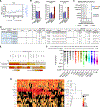


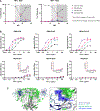
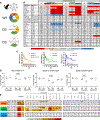
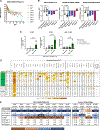
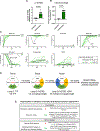
Update of
-
Transient glycan-shield reduction induces CD4-binding site broadly neutralizing antibodies in SHIV-infected macaques.bioRxiv [Preprint]. 2024 Dec 30:2024.12.30.630768. doi: 10.1101/2024.12.30.630768. bioRxiv. 2024. Update in: Cell Rep. 2025 Jun 24;44(6):115848. doi: 10.1016/j.celrep.2025.115848. PMID: 39803442 Free PMC article. Updated. Preprint.
References
-
- Keele BF, Giorgi EE, Salazar-Gonzalez JF, Decker JM, Pham KT, Salazar MG, Sun C, Grayson T, Wang S, Li H, et al. (2008). Identification and characterization of transmitted and early founder virus envelopes in primary HIV-1 infection. Proc. Natl. Acad. Sci. 105, 7552–7557. 10.1073/pnas.0802203105. - DOI - PMC - PubMed
-
- Li H, Wang S, Kong R, Ding W, Lee F-H, Parker Z, Kim E, Learn GH, Hahn P, Policicchio B, et al. (2016). Envelope residue 375 substitutions in simian–human immunodeficiency viruses enhance CD4 binding and replication in rhesus macaques. Proc. Natl. Acad. Sci. 113, E3413–E3422. 10.1073/pnas.1606636113. - DOI - PMC - PubMed
MeSH terms
Substances
Grants and funding
LinkOut - more resources
Full Text Sources
Molecular Biology Databases
Research Materials
Miscellaneous

